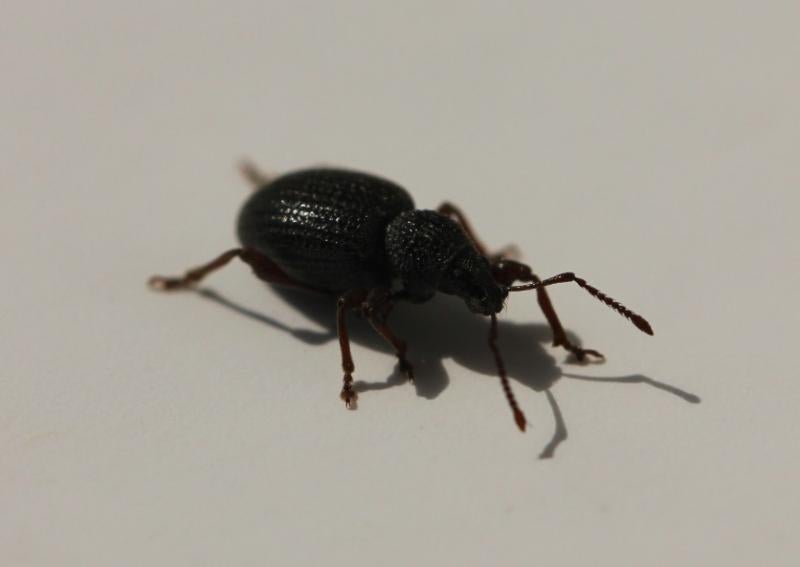
Black vine weevils are now showing up across the state. It is typical for the adult beetles to emerge in early summer and begin feeding on plant foliage (Figure 1). They primarily feed on lilacs and yews, both common landscape shrubs.
Although the adults cause minimal damage and are considered nuisance pests, their larvae feed on the roots and can occasionally be a threat to ornamental plants, especially those grown in pots or containers.
Profile and Management
Adult black vine weevils are nocturnal feeders, leaving behind small notches in the leaf edges. After feeding for a couple of weeks, they will lay eggs around the host plant and the larvae will burrow into the soil. Larval feeding can cause host plants to become wilted or stunted. If extensive feeding damage is observed or large numbers of adults are present, management may be warranted. Applying insecticides labeled for black vine weevils to the plant foliage can be effective at reducing their populations. To manage the larvae directly, beneficial nematodes may be applied to the soil surrounding the affected plants.
In South Dakota, black vine weevils are often sporadic and do not require management. They are mostly nuisance pests, especially when they make their way indoors. For more information about black vine weevils and related species, please refer to this previously published article, "Root Weevils & Imported Longhorned Weevils Finding Their Way Inside."


